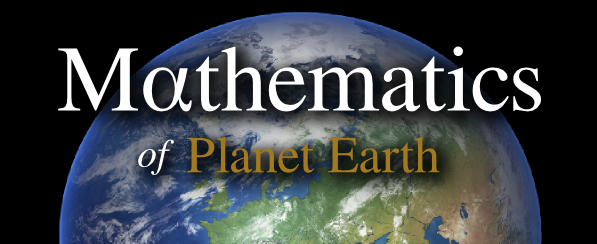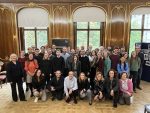This year’s Jamboree saw two full days of group work on industrial projects, an increased duration on the previous year, but with the same industrial partners: AIR worldwide and EDF Energy. The study groups gave us a great chance for cross-cohort work and mix our knowledge, backgrounds and interest. Our team-work skills played a fundamental role in organising and carrying out the tasks and this year we also provided each other with anonymous constructive feedback to improve our contribution as part of a team and learn from our peers.
AIR Worldwide: The case study proposed this year by AIR worldwide aimed at exploring emulators for earthquake catastrophe models, i.e. simpler statistical models to predict losses in different sectors due to earthquakes in regions of the world not covered by the full complex model. Two approaches were suggested, classical statistical techniques (Group A), and a machine learning approach (Group B). During these two days we (Group B) studied the basics of neural networks, investigated different methods to reduce the number of predictors to use and cleaned and treated the provided data to test our ideas on. It was fundamental to organise ourselves in subgroups, each dealing with a different aspect of the project.
EDF Energy: The case study proposed this year by EDF involved analysing historical rainfall and wind data from the UK. Group C used both a physical and statistical approach to try and find the maximum value of rainfall that could ever fall on one day in the UK. They also analysed the data in the attempt to find when and where an extreme rainfall event had occurred before. In the spirit of collaboration all the code used in the project was made available on Github. Group D looked at the combination of possible hazards, in particular rainfall and wind speed, to try and determine the probability of a storm of a particular magnitude instead of just the probability of rain and wind separately. This information is important when doing risk assessments for a power plant, since a combination of wind and rain can be hazardous, even if the individual levels of rain and wind are not.




Following the group projects, the Jamboree also involved a day of talks and presentations. In the morning, visitors from academia and industry gave talks on their own work and in the afternoon CDT students gave presentations.
Morning session: The last day of the Jamboree started with our student mini-symposium with contributed talks by Dr Gordon Woo(Risk Management Solutions) who gave a wide-spanning talk on “Counterfactual thinking in climate science”, followed by Dr Alison Ramage(University of Strathclyde) with a technical and at the same time very engaging talk on “Limited-memory approximation of the inverse Hessian in 4D-Var” and finally Dr Hilary Weller (University of Reading) with an interesting talk on “Moving meshes for global atmospheric modelling”. Bravo and Charlie students had the opportunity to present posters on their research to EPSRC officers, members of the University of Reading, invited speakers and colleagues. This was a great opportunity to get to know more about our fellows students research and to practise our communication skills with nonexperts.
Afternoon session: In the afternoon Cohort Delta gave 3-minutes-thesis-style talks about their MRes projects. The aim of the talks was that they should be accessible to non-experts which was challenging but great practice for when non-mathematical friends ask us what we’re researching. Although we were all nervous, this was a great way to practice giving presentations about our work in the safe environment of an audience of our fellow CDT students. It was also really interesting to learn a little bit more about all the projects our fellow MRes students are doing.
MRes projects talks:
- Adriaan_Hilbers
- Mariana Clare
- George Chappelle
- Stuart_Patching
- Louis Sharrock
- Niraj_Agarwal
- Alexander_Alecio
- Thompson Rhys Leighton
- Manuel_Santos
- Leonardo Ripoli
- Ben_Ashby
- Israelsson Jennifer Elisabeth
- Ieva_Dauzickaite
- Sebastiano Roncoroni
- Elena Saggioro
- Georgios Sialounas
The Plenary talk of this year Jamboree was given by Dr Judith Berner from University Corporation for Atmospheric Research, USA. “Stochastic Parameterizations: Towards a new view of Weather and Climate Models” was the title and indeed Dr Berner extensively explained the application of stochastic parameterisation to climate predictions, in particular to better forecast the El-Nino Southern Oscillation.
The Jamboree successfully ended with a prize giving for Cohort Charlie, for the best poster and for the best short presentation. This was followed by a drinks reception where we all celebrated the good results of the three days and the birthdays of two MPE students!
We look forward the next Jamboree in 2019!
Reported by: Mariana Clare, Jennifer Israelsson, Joe Wallwork and Giulia Carigi






